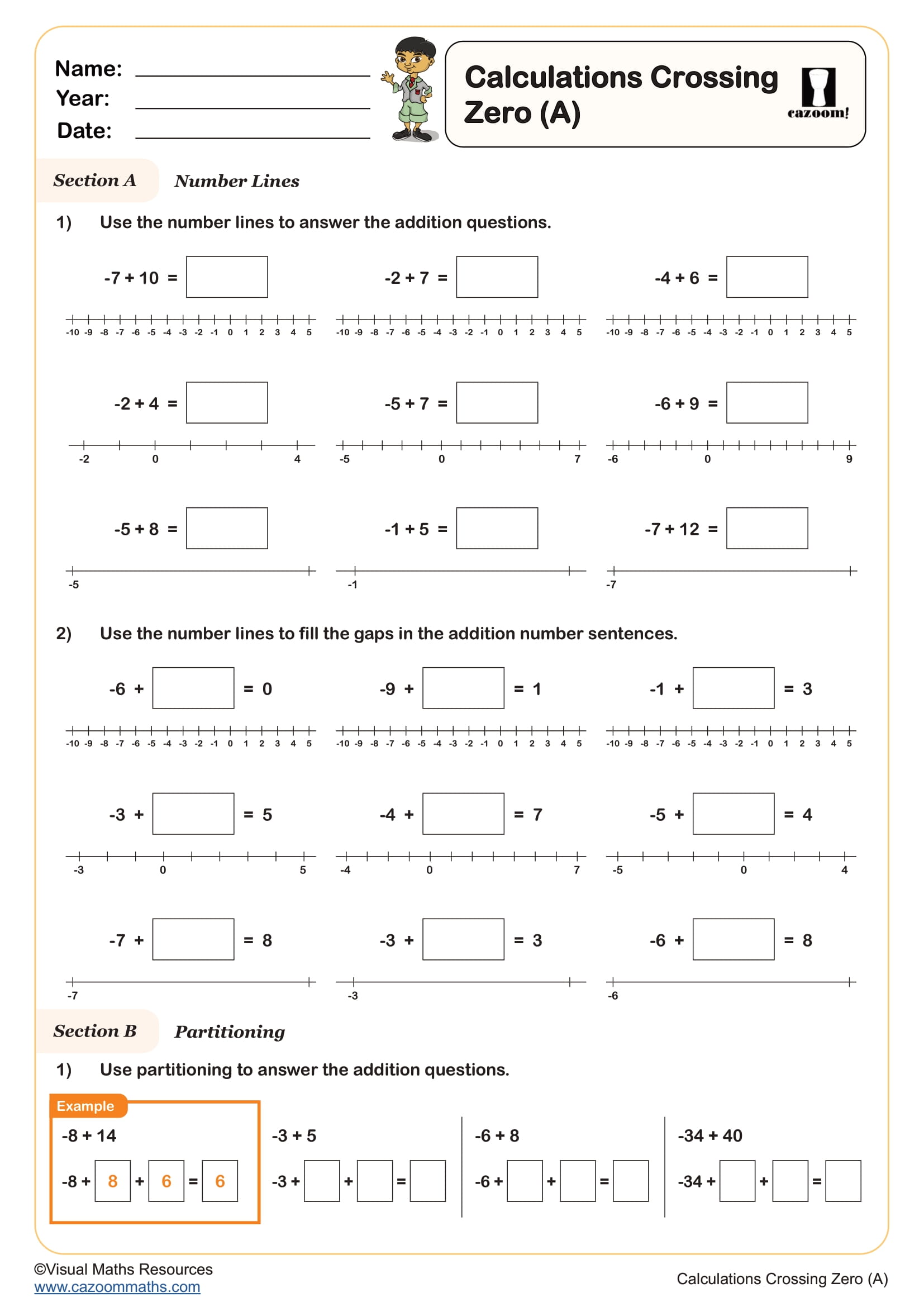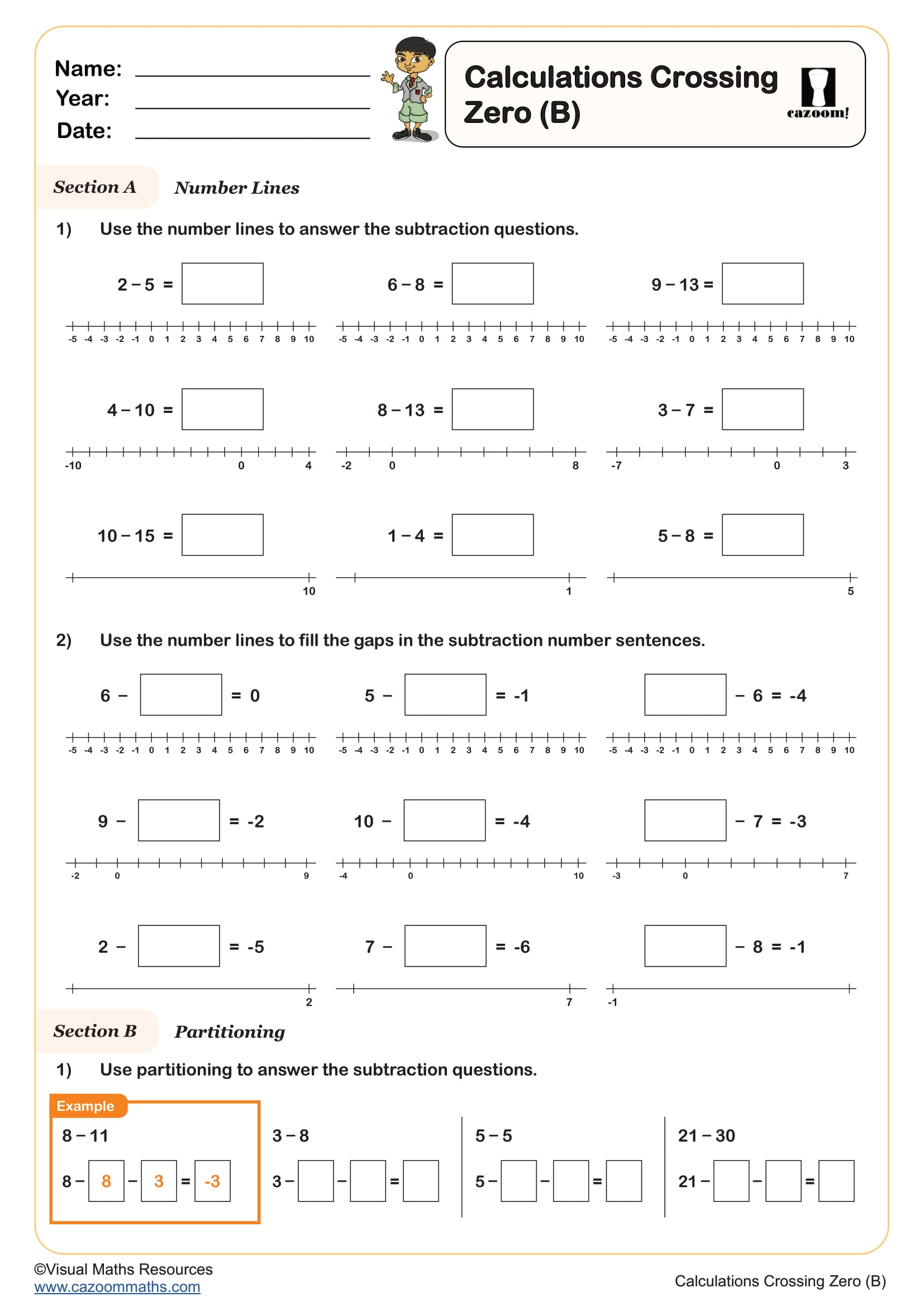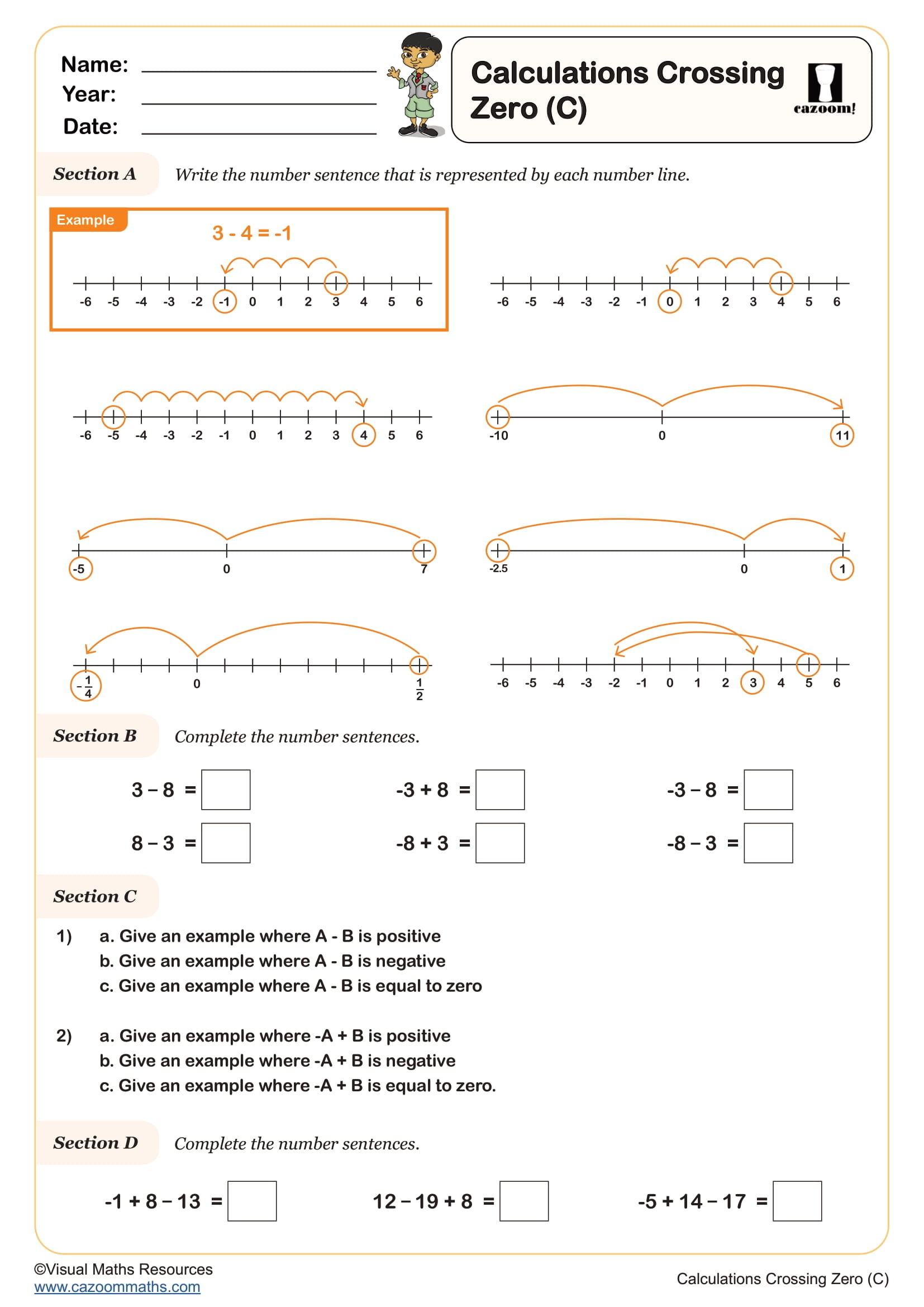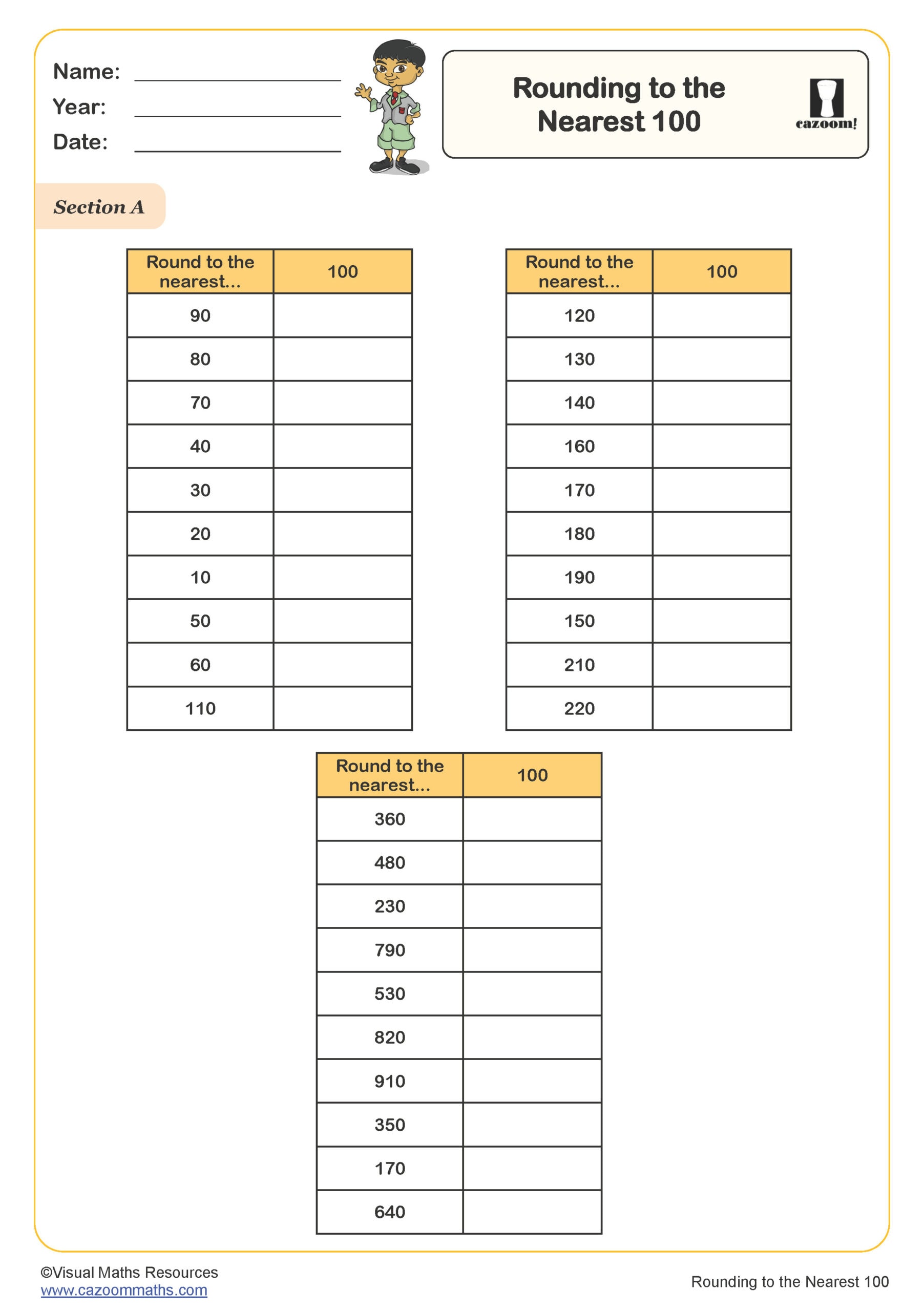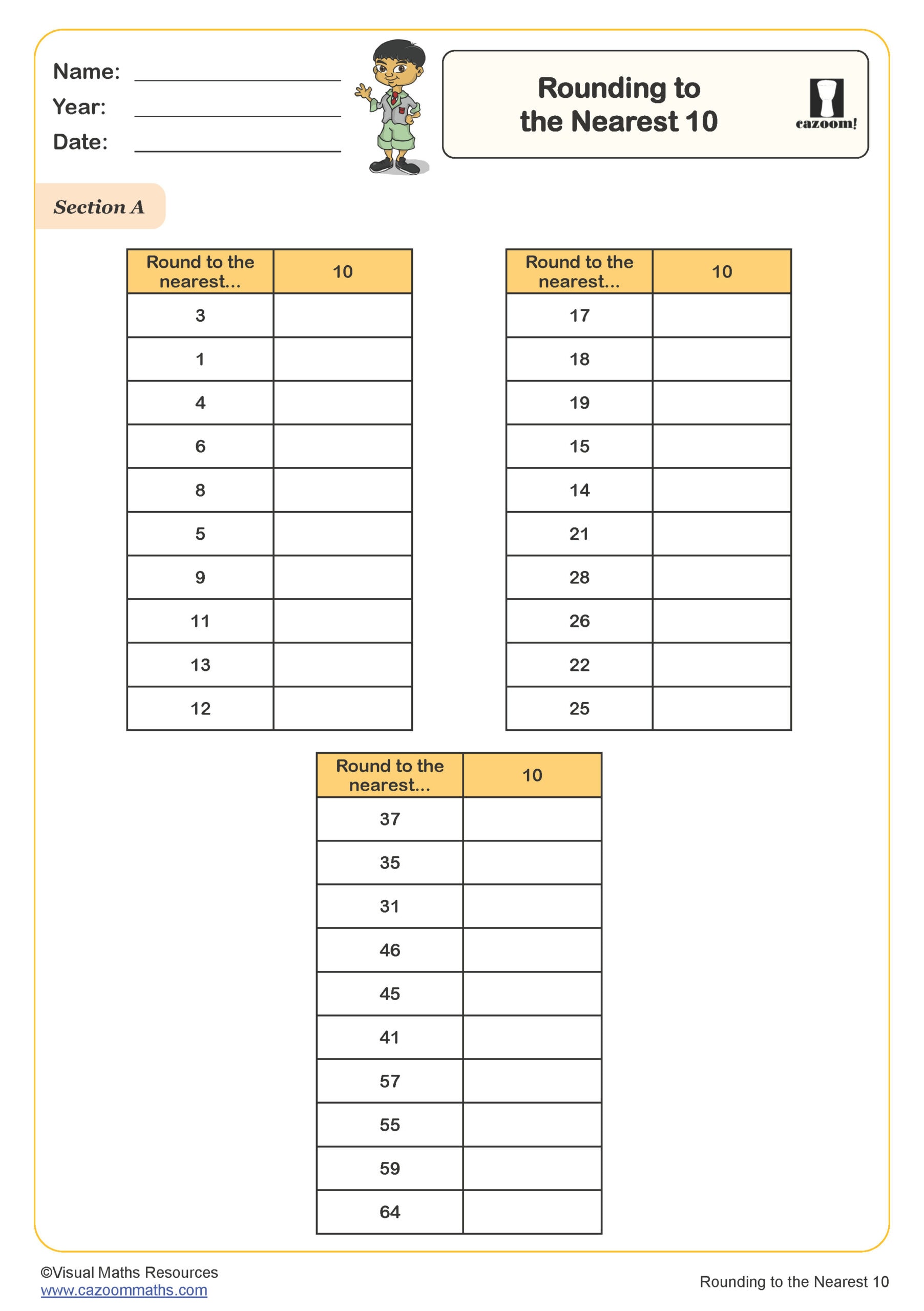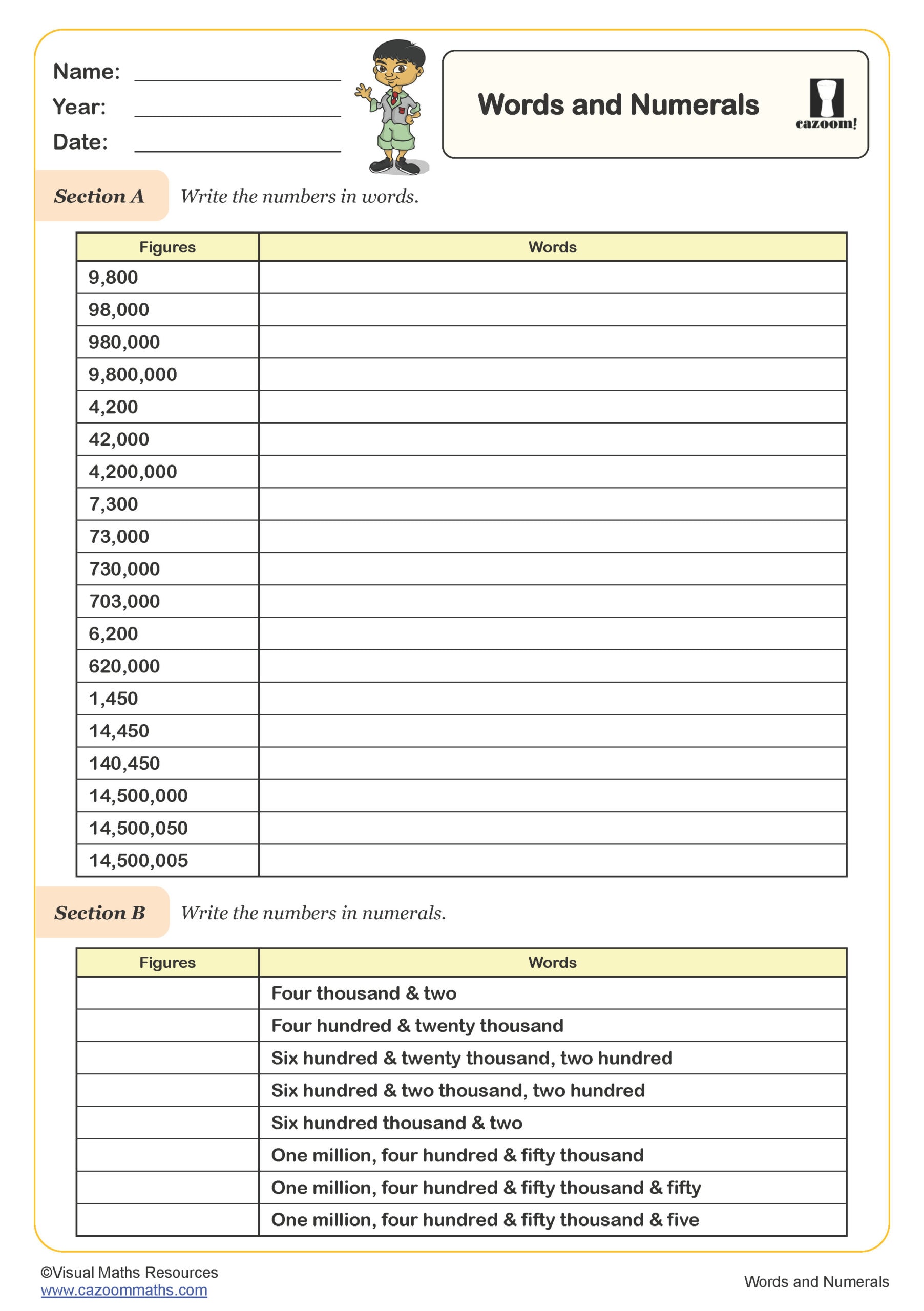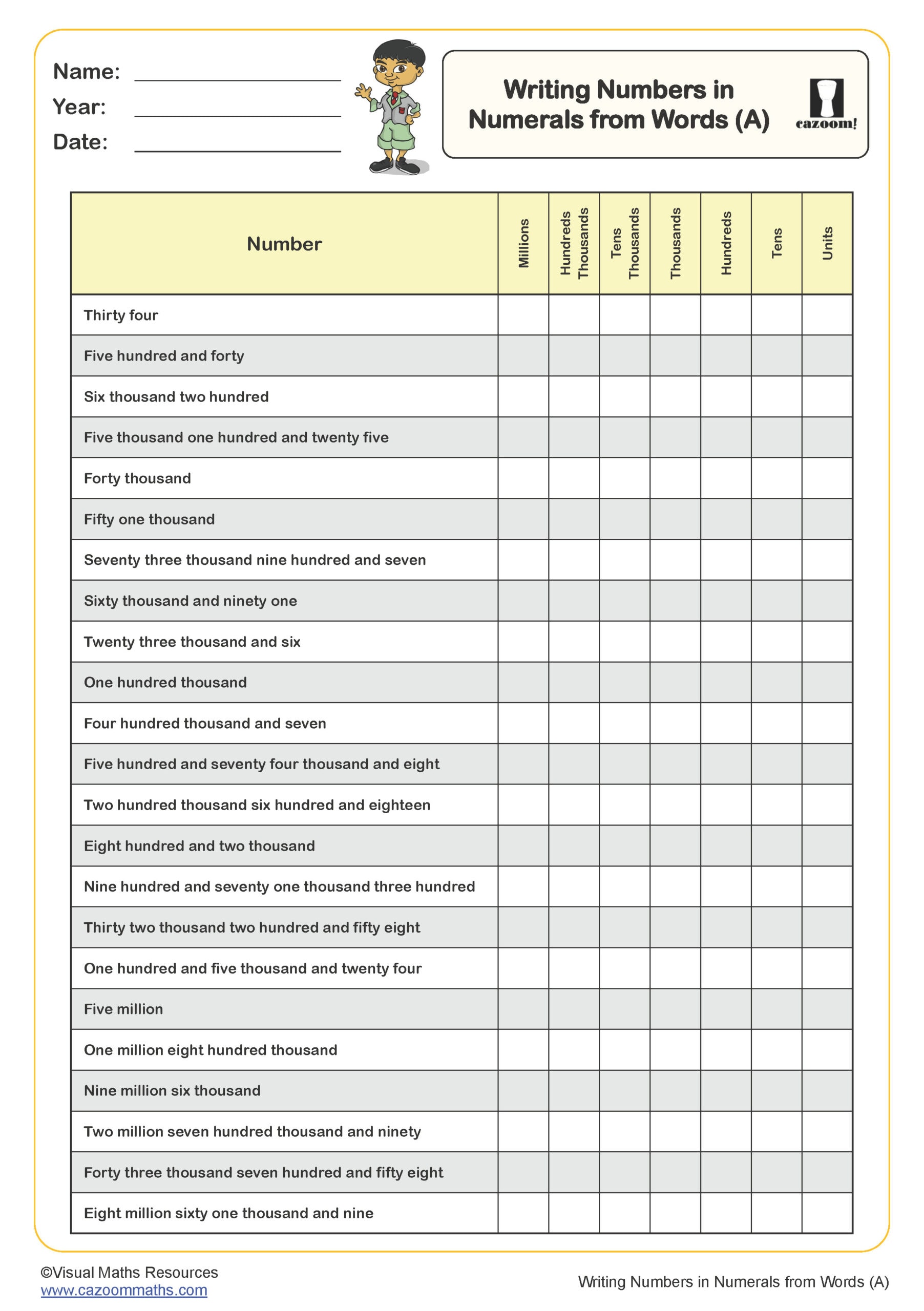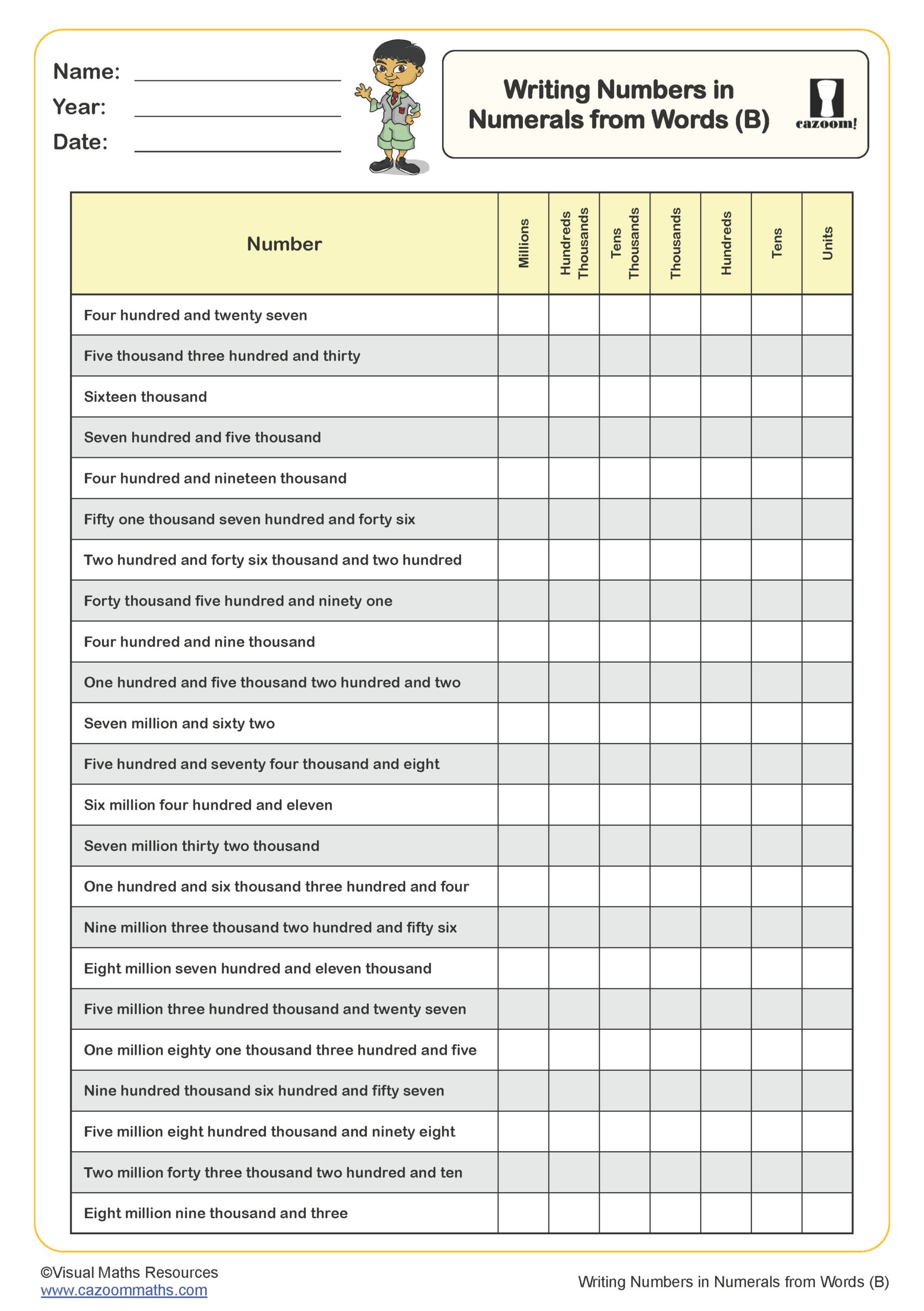Year 6 Number and Place Value Worksheets
Place Value Worksheets PDF Downloads with Step-by-Step Solutions
Each of our Year 6 Number and Place Value worksheets is created in ready-to-use, printable PDF format and targets specific skills, such as strategies for calculating across zero, rounding to the nearest 10, Words and Numerals, and related concepts. The detailed solutions, which are included separately with each of our resources, clearly show every step. These resources make the checking process hassle-free and help your primary school students understand their mistakes easily and effectively.
Essential Number Skills Covered in Our Place Value Collection
The core idea of the number skill- Place value can be easily explained as understanding that where a digit sits in a number completely changes what it's worth - so the "5" in 53 means something totally different from the "5" in 503. It's honestly one of those concepts that seems obvious once you get it, but it's the foundation for absolutely everything else in maths, from basic addition right through to working with decimals and beyond.
Here are a few concepts that we have added to our worksheet collections-
• Calculations with Negative Numbers
• Rounding and Approximation
• Number Representation and Conversion
Why Year 6 Students Benefit from Focused Place Value Practice
Here's what we've noticed: students who struggle with place value often struggle across all areas of maths. Regular practice with these concepts builds the confidence they need for KS2 SATs and beyond. The worksheets target those specific areas where Year 6 students typically make mistakes.
• Number confidence - Students develop fluency with large numbers before secondary school
• Assessment preparation - Covers all KS2 place value objectives thoroughly
• Problem-solving skills - Includes reasoning questions that stretch thinking
• Visual learning support - Clear layouts help students organise their work
• Differentiated challenge - Activities suitable for different ability levels within the class
Everyday Situations Where Students Apply Place Value Knowledge
Place value skills connect across subjects and into real life. Geography lessons become more meaningful when they can properly read population figures, and science measurements make perfect sense. It's quite rewarding when students suddenly realise they're using place value skills without even thinking about it.
• Reading news articles with large numbers (population statistics, distances, costs)
• Geography work involving coordinates, map scales, and demographic data
• Science calculations using standard form and measurement conversions
• Shopping scenarios comparing prices and calculating savings or discounts
• Sports statistics understanding scores, times, and league tables
• Technology use involves working with file sizes, screen resolutions, and data amounts
